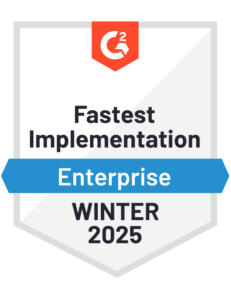Intelligent Automation and Gen AI: Time for Radical Transformation
Blog post
Share
Intelligent Automation technologies, including GenAI, are driving a radical transformation of SG&A functions. The Hackett Group® predicts that GenAI could reduce SG&A costs by up to 40% over the next 5-7 years. This is tremendously exciting. However, it requires that decision makers understand transformative Intelligent Automation technologies – their potential, where to apply, and how to manage risk.
Transformative Technologies: Be Smart About Intelligent Automation
Intelligent Automation is a category of advanced transformative technologies focused on optimizing structured, unstructured, and interactive work. Intelligent Automation technologies abound. Intelligent Automation is comprised of 6 types of automation:
| Automation Type | Mimics | Definition | Degree of Adoption |
| Robotic Process Automation (RPA) | Human actions | Automates rules-based tasks on structured data | 80% |
| Intelligent Data Capture | Human interpretations | Captures or extracts information from analog and digital inputs | 49% |
| Conversational Assistants | Human interactions | Linguistic interactions and optimized conversations using Natural Language Processing, and Natural Language Generation | 33% |
| Predictive AI | Human intelligence | Processes are structured, information is complex; provides insights, and predictions driven by algorithms | 26% |
| Agile Orchestration | Human work management | Executes by established systems, and manual and digital labor (e.g., process mining, business process management, workflow) | 30% |
| Generative AI | Human thinking | Provides context-based knowledge that can create content and enable autonomous operations | 43%1 |
Success With AI Will Vary. Discipline Matters.
Organizations and decision makers need to find the right balance between speed and approach. Organizations that are adopting a more disciplined approach, while smaller in number, are expected to achieve a higher ROI while more effectively mitigating risks.
| Name | Adoption Level | Risk | Benefit |
| Late Adopters | – 30% of companies – Waiting for technology to mature |
Low | Low |
| Experimenters | – 60% of companies – Entrepreneurial hot spots experiment throughout the organization |
High | Moderate |
| Disciplined Leaders | – 10% of companies – Disciplined approach with appointed leader that engages in disciplined AI processes |
Low | High |
GenAI is Now Integral to The Finance Roadmap
Finance has a full agenda of priorities where Gen AI can begin to directly impact productivity. Examples of how finance teams are tactically utilizing Gen AI, at this stage in the cycle, include:
- Internal audit, compliance review and reporting
- Environmental, social and governance reporting
- Creating alerts for new regulations with change summaries
- Drafting responses to regulator queries
- Drafting financial reports and summaries for internal and external reporting
- Preparing earnings call scripts and earnings releases, and anticipating investor inquiries
- Assisting in research for credit application reviewers
- Preparing intelligent auto-responses
- Performing tax calculations
Gen AI Use Case Benefits Will Accrue Over Time
AI has a broad range of applications in finance and accounting, helping professionals make more informed decisions, automate repetitive tasks, and improve overall efficiency. Examples include:
| Intelligent Automation Use Cases | Description | Expected Benefits |
| Technical Accounting Research | Scan accounting standards, regulations, and technical accounting guidance to generate position papers on the impact of new accounting standards on company financials under different scenarios | – Faster turnaround time on technical accounting position papers – Lower cost and effort associated with technical accounting research – Shorter research cycle enables more proactive and informed response to new accounting regulations – Stronger compliance with new accounting regulations |
| External Reporting Narrative and Disclosures | Automate the creation of management discussion and analysis commentary and footnotes to explain financial results to investors in external report filings, earnings release communications and investor presentations | – Shorter cycle time for narrative creation – Lower external reporting costs – Increased speed to release earnings and file external reports – Narrative commentary can be leveraged for other purposes and audiences in multiple formats |
| Transaction Matching Analysis | Analyze non-matching transactions, supporting documentation and historical data to detect patterns across divisions to create automated matching recommendations and better insights for decision making and process optimization | – Faster reconciliation of intercompany accounts – Lower cost and effort associated with intercompany accounting – Greater automation in intercompany reconciliation – Faster close cycle time |
| Journal Entry Creation | Automatically create and post journal entries for common and high-volume transactions, generate and store supporting documentation | – Higher automation of journal entries – Lower cost and effort associated with general ledger accounting activities, including journal entry processing – Faster close cycle time |
| Cost Allocation Scenario Modelling | Analyze cost allocation history, consumption trends, transaction volumes and external market data to build cost allocation scenarios and recommended actions | – Deeper insight into cost allocation and consumption trends – Faster, more comprehensive analysis of cost consumption driving better, more informed decisions on allocation model – Lower cost and effort associated with corporate allocations and cost modeling – Ability to dynamically adjust allocation models as internal and external conditions change |
Final Thoughts
When transforming a Finance process, assess the work by type and then eliminate, enable, and enhance:
- Structured work (organized in a set and repeatable pattern): eliminate through automation
- Unstructured work (typically not organized in a set pattern): enable by adopting digital assistants
- Interactive work (requires at least a two-way interaction between the user and system): enhance through personalization at scale
AI provides forward-thinking leaders and decision makers the opportunity to radically transform their finance and accounting service delivery model. GenAI will reduce FTEs in the transactional processes but bolster finance value-adding capabilities. It will require new specializations. Skill sets will be augmented. It will boost productivity. GenAI changes the conversations.
Written By: Bill Marchionni, Account-to-Report Advisory Global Program Leader, The Hackett Group
Read this Forbes article by Trintech CFO Omar Choucair, “Understanding How AI Fits Into Your Finance Function.”






